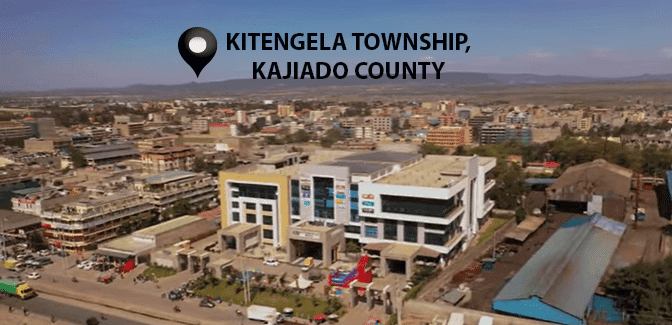Are REITs in Kenya Worth It?
Explore the opportunities and risks of REITs in Kenya. Learn how real estate investment trusts Kenya work, how to invest, and whether property investment Kenya via REITs is worth your money.
What Are REITs?
Definition of a Real Estate Investment Trust (globally)
Are REITs in Kenya Worth It?
A Real Estate Investment Trust (REIT) is a company that owns, operates, or finances income-generating real estate, providing investors with an opportunity to access property markets without buying physical property. Globally, REITs pool funds from multiple investors to acquire large-scale assets like office buildings, shopping malls, hotels, and residential complexes. They are designed to distribute at least 90% of their taxable income to shareholders as dividends, making them a popular option for income-focused investors. REITs also allow investors to diversify their portfolios, benefit from professional property management, and participate in the potential appreciation of commercial and residential real estate markets.
How REITs Work in Kenya — Structure, Listing, Unit Holders
In Kenya, REITs operate under strict regulation by the Capital Markets Authority (CMA) to ensure investor protection and transparency. Kenyan REITs are typically listed on the Nairobi Securities Exchange (NSE), where investors can buy and sell units just like stocks, offering liquidity that direct property ownership cannot match. Investors who buy REIT units become partial owners of the trust’s property portfolio and are entitled to a share of rental income and capital gains. The REIT structure also requires a trustee, fund manager, and custodian, each playing a key role in governance and compliance.
- Listed REITs: Offer daily liquidity, easy entry and exit, and market-based pricing.
- Unlisted REITs: Less liquid but may provide higher returns and longer-term growth.
- Unit holders: Enjoy dividend income and potential property value appreciation without the responsibilities of property management.

Types of REITs in Kenya (Income, Development, Sharia-Compliant)
Kenya’s REIT market provides different structures to meet various investor goals and risk appetites.
- Income REITs: Focus primarily on established properties that generate stable rental income. They are ideal for investors seeking predictable cash flow with lower risk. For example, a commercial office building leased to multiple tenants can provide a steady dividend stream.
- Development REITs: Invest in properties that are under construction or redevelopment, offering higher potential returns if the project succeeds. These REITs carry more risk due to construction delays, cost overruns, or market changes.
- Sharia-compliant REITs: Designed according to Islamic finance principles, these REITs avoid interest-based income and invest only in permissible assets. They provide an opportunity for ethically-minded investors to participate in property investment Kenya while adhering to Sharia guidelines.
Choosing the right REIT depends on your financial goals, risk tolerance, and income expectations. By understanding the types available, investors can select REITs that align with their investment strategy while benefiting from Kenya’s growing real estate sector.
The Regulatory & Market Environment of REITs in Kenya
The Capital Markets Authority (CMA) framework for real estate investment trusts Kenya — key rules
The Capital Markets Authority (CMA) is the main regulator overseeing REITs in Kenya, ensuring transparency, investor protection, and compliance with local laws. All REITs in Kenya must be registered with the CMA and adhere to its regulations, which include maintaining a trust deed, appointing a fund manager and trustee, and submitting periodic financial reports. The CMA framework ensures that unit holders’ interests are safeguarded and that REIT managers operate within clear governance standards. Investors should review the CMA-approved REIT guidelines before investing to understand the rules on fund distribution, valuation, and risk management.
The Role of the Nairobi Securities Exchange (NSE) & Trading Mechanisms for REITs
The Nairobi Securities Exchange (NSE) plays a critical role in Kenya’s REIT market by providing a platform for listed REITs to be bought and sold. Listed REITs trade like stocks, offering liquidity and transparency in pricing. Investors can place buy or sell orders through licensed brokers, monitor market performance, and track dividend payments. Unlisted REITs, on the other hand, are privately held and often require direct arrangements with the fund manager for subscription or redemption. Understanding how REIT units are traded on the NSE is essential for evaluating liquidity risk and timing investments effectively.

Market Size, Authorised REITs in Kenya, Current Status & Listing vs Unlisted
Kenya’s REIT market is still emerging but growing steadily. Currently, there are a few authorised REITs under the CMA, with some listed on the NSE and others operating as unlisted private trusts. Listed REITs provide daily liquidity and market-driven pricing, whereas unlisted REITs often target institutional investors or high-net-worth individuals with higher minimum investments. The overall market size remains small compared to global standards, but trends like urbanisation, demand for office space, and student housing are increasing opportunities for investors.
- Listed REITs: Easy entry and exit, transparent pricing, and regulated by CMA and NSE.
- Unlisted REITs: Potentially higher returns, but lower liquidity and fewer disclosure requirements.
Tax, Incentives and Costs of Investing in REITs in Kenya
Investing in REITs in Kenya comes with tax considerations and potential incentives. Dividend income from REITs is subject to withholding tax, which investors should account for when calculating returns. Some REITs may also benefit from exemptions or tax incentives designed to encourage investment in real estate, especially in sectors like affordable housing or student accommodation. Additionally, investors need to consider management fees, custodian charges, and brokerage fees when buying or selling REIT units. Evaluating these costs upfront helps investors understand the net returns and compare REIT investments against direct property ownership.
Key Benefits of Investing in REITs in Kenya
Access to property investment Kenya without owning direct property
One of the main advantages of REITs in Kenya is that they allow investors to participate in the real estate market without buying or managing physical property. Through REITs, investors can gain exposure to commercial buildings, shopping malls, student accommodations, and residential complexes. This approach eliminates the need for large capital outlays, property maintenance, or tenant management, making property investment Kenya more accessible to small and medium investors.
- Entry is possible with relatively modest investment amounts compared to buying an entire property.
- Investors can diversify across multiple properties through a single REIT, reducing individual asset risk.
Dividend income potential, capital growth and inflation hedge
REITs in Kenya provide the dual benefit of regular dividend income and potential capital appreciation. Rental income from the underlying property portfolio is distributed to unit holders, often on a quarterly or annual basis. Over time, property value appreciation can also increase the net asset value of REIT units. Additionally, real estate is often considered an effective hedge against inflation, as rental yields and property values tend to rise with general price levels. This combination makes REITs a compelling option for income-focused and long-term growth investors alike.
Liquidity, diversification, ease of entry for smaller investors (vs direct property)
Compared to direct property investment, REITs offer significant advantages in liquidity, diversification, and accessibility. Listed REIT units can be bought or sold on the Nairobi Securities Exchange, giving investors the ability to enter or exit the market more easily. Diversification comes naturally, as a single REIT typically holds multiple properties across different sectors, reducing reliance on one asset or tenant. This structure also lowers the barrier for smaller investors, who may not have enough capital to buy or manage an entire property on their own.
- Liquidity is higher than direct property, especially for listed REITs.
- Investors can spread risk across residential, commercial, and specialised properties.
- Easier portfolio management without dealing with maintenance or tenants.

Risks & Challenges of REITs in Kenya
High entry thresholds, limited number of REITs, illiquidity
Despite their benefits, REITs in Kenya have challenges that investors should consider. Some REITs require high minimum investments, limiting access for smaller retail investors. Additionally, the number of authorised and listed REITs in Kenya is still small, which reduces market options and may limit portfolio diversification. Unlisted REITs can also be illiquid, making it difficult for investors to exit their positions quickly if needed.
Property sector risks in Kenya – vacancy rates, rental yields, interest rates, currency/inflation
The performance of REITs in Kenya is closely tied to the underlying property market. High vacancy rates, falling rental yields, or prolonged construction delays can negatively impact returns. Additionally, macroeconomic factors like rising interest rates, currency fluctuations, and inflation can affect both property values and dividend income. Investors must evaluate these market dynamics carefully when considering REITs in Kenya.
Regulatory & market maturity issues (approval delays, investor awareness)
Kenya’s REIT market is still developing, which introduces regulatory and structural risks. Approval processes for new REITs can be lengthy, and market awareness among investors remains low, limiting participation. Additionally, gaps in regulatory enforcement or inconsistent reporting standards may pose challenges for investors relying on transparency and consistent information. Understanding these risks is essential for anyone considering property investment Kenya through REITs.
How to Evaluate a Kenyan REIT Before Investing
Key metrics: NAV, Funds‑from‑Operations (FFO), Dividend Yield, Leverage
When evaluating REITs in Kenya, understanding key financial metrics is essential.
- Net Asset Value (NAV): Represents the total value of the REIT’s property assets minus liabilities. A higher NAV per unit may indicate stronger asset backing.
- Funds-from-Operations (FFO): Measures cash generated by the REIT’s operations, giving a realistic view of its ability to pay dividends.
- Dividend Yield: Shows the annual dividend as a percentage of the unit price, helping investors compare returns across REITs.
- Leverage: Indicates the level of debt relative to assets; high leverage can amplify returns but increases risk.
By analysing these metrics, investors can assess the financial health, stability, and potential profitability of real estate investment trusts Kenya.
What to check: Trustee, manager credibility, trust deed, portfolio quality, exit mechanism
Beyond numbers, qualitative factors determine a REIT’s reliability and potential for growth. Investors should review:
- Trustee: Responsible for safeguarding investor interests and ensuring regulatory compliance.
- Fund Manager Credibility: Experienced managers typically deliver better performance and risk management.
- Trust Deed: Outlines investment objectives, dividend policy, and governance rules.
- Portfolio Quality: Location, property type, occupancy rates, and tenant diversity affect returns.
- Exit Mechanism: Liquidity options—listed REITs can be sold on NSE, unlisted may require redemption arrangements.
Checking these aspects helps mitigate risks and ensures alignment with personal investment goals.

Case study: Current Kenyan REITs (e.g., Fahari I‑REIT, Acorn I‑REIT) — performance, pros & cons
For practical insight, consider Kenyan REITs such as Fahari I‑REIT and Acorn I‑REIT. Fahari I‑REIT invests mainly in commercial properties and has shown consistent rental income, making it attractive for income-focused investors. Acorn I‑REIT targets student housing, offering potential high growth but higher risk due to market fluctuations.
Pros of these REITs:
- Diversified property portfolios
- Access to high-value real estate without direct ownership
- Professional management and regulatory oversight
Cons:
- Limited number of units may restrict liquidity
- Exposure to property market risks, including vacancies and rental defaults
REITs vs Direct Property Investment in Kenya
Cost comparison: direct property ownership vs investing in REITs in Kenya
Investing in a REIT generally requires a smaller initial capital compared to buying property outright. Direct property ownership often involves large down payments, legal fees, maintenance costs, and taxes. In contrast, REIT investors pay unit prices and management fees but avoid ongoing maintenance and management hassles.
- Direct property: High upfront cost, ongoing maintenance, potential for capital appreciation.
- REITs: Lower entry cost, professional management, dividend income, less direct responsibility.
Liquidity & management burden: which is easier for you?
REITs offer higher liquidity because listed units can be traded on the NSE, while direct property may take months or years to sell. Managing a property involves tenant management, repairs, taxes, and insurance, whereas REITs delegate these responsibilities to professional fund managers. For investors seeking hassle-free income and easier portfolio management, REITs may be the better option.
Suitability: Which type of investor is best for REITs in Kenya vs direct property investment Kenya?
Choosing between REITs and direct property depends on the investor’s goals, capital, and risk tolerance.
- REITs: Suitable for investors seeking liquidity, diversification, and passive income with smaller capital.
- Direct property: Ideal for those with significant capital, long-term horizon, and willingness to manage or outsource property.
Investors can even combine both strategies to balance income, growth, and risk within a property-focused portfolio in Kenya.
Practical Steps for Investing in REITs in Kenya
How to get started: brokers, platforms, minimum investments, unlisted vs listed
Getting started with REITs in Kenya requires understanding the investment channels and requirements. Investors can purchase REIT units through licensed brokers or online investment platforms approved by the Nairobi Securities Exchange (NSE). Minimum investments vary depending on the REIT—listed REITs often allow smaller entry amounts, while unlisted REITs may require higher capital. Choosing between listed and unlisted REITs depends on your liquidity needs, risk appetite, and investment horizon.
- Listed REITs: Easier access, daily trading, transparent pricing.
- Unlisted REITs: Potentially higher returns but lower liquidity.
Step‑by‑step: selecting a REIT, completing paperwork, monitoring performance
Investing successfully in REITs involves a structured approach:
- Research and selection: Identify REITs that match your investment goals, risk tolerance, and desired sector (commercial, residential, student housing).
- Due diligence: Review the fund manager, trustee, portfolio composition, past performance, and CMA approval.
- Subscription and paperwork: Complete investor forms, provide identification, and transfer funds through a licensed broker or platform.
- Ongoing monitoring: Track dividend payments, portfolio updates, property occupancy, and NAV changes to make informed decisions.
This step-by-step approach ensures a smooth investment process while minimising common pitfalls in real estate investment trusts Kenya.
Tax and regulatory pitfalls specific to Kenya
Investors in REITs in Kenya should be aware of taxes and regulatory requirements that can impact returns. Dividend income from REITs is subject to withholding tax, which reduces net returns. Some REITs may also charge management or custodian fees, which investors should consider when calculating profits. Additionally, unlisted REITs may have fewer disclosure requirements, creating regulatory and liquidity risks. Understanding these factors helps investors avoid surprises and make more informed property investment decisions in Kenya.

Monitoring and exit strategies for your REIT investment (unit trading, redemption, etc.)
Effective monitoring and exit strategies are crucial for maximising returns from REITs in Kenya. Listed REIT units can be sold on the NSE, allowing investors to adjust their portfolio in response to market conditions. Unlisted REITs may require redemption requests through the fund manager, often subject to waiting periods. Regularly reviewing property valuations, dividend distributions, and market trends ensures timely decisions, whether you aim to reinvest, hold for income, or exit the investment.
Outlook for REITs in Kenya: Are They “Worth It”?
Recent performance trends and data for real estate investment trusts Kenya
Kenya’s REIT market has shown gradual growth since its inception, with both income and development REITs demonstrating potential for steady returns. Listed REITs have offered consistent dividends, particularly from commercial and residential properties in urban centers. However, the market is still small compared to global REIT markets, and performance varies based on property type, occupancy, and macroeconomic conditions such as interest rates and inflation. Understanding these trends helps investors gauge expected returns and risk exposure in real estate investment trusts Kenya.
Future opportunities: housing deficit, commercial real estate growth, policy shifts
The future of REITs in Kenya is promising due to several factors:
- Housing deficit: High demand for affordable and mid-range housing creates opportunities for residential REITs.
- Commercial growth: Expansion in office and retail sectors supports income-focused REITs.
- Policy support: CMA and government initiatives encourage REIT development, improving transparency and investor confidence.
These factors suggest that REITs can be an attractive option for investors willing to navigate an emerging market with long-term growth potential.
Internal linking suggestion: Link to “Future of Property Investment Kenya” or “Emerging Opportunities in Kenyan REITs.”
REITs in Kenya are worth considering for investors seeking:
- Passive income: Dividend-paying REITs for stable cash flow.
- Diversification: Exposure to multiple properties without owning them directly.
- Moderate risk tolerance: Willingness to navigate a small but growing REIT market.
They may be less suitable for investors needing immediate liquidity, high capital growth, or direct property control. Combining REITs with direct property holdings can balance income, risk, and long-term growth for Kenyan investors.
Conclusion
Investing in REITs in Kenya offers a practical way to participate in the real estate market without the challenges of direct property ownership. Throughout this guide, we explored how REITs work, the types available, key benefits such as dividend income and diversification, as well as the risks including liquidity, market maturity, and regulatory factors.
For many investors, REITs in Kenya are worth considering if you seek passive income, portfolio diversification, and exposure to commercial or residential properties with relatively lower capital requirements. However, careful evaluation of REIT performance, manager credibility, and market conditions is essential before committing.
Next steps:
- Research and select a REIT that aligns with your goals and risk appetite.
- Understand the CMA regulations and tax obligations in Kenya.
- Consider a mix of listed and unlisted REITs or combine with direct property for a balanced strategy.





